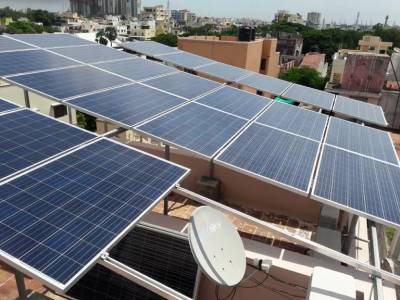Description
Harness the Power of the Sun: Your Guide to Solar Energy
Embrace a cleaner, greener, and more cost-effective future with solar energy! This isn't just about reducing your carbon footprint; it's about taking control of your energy costs and securing your energy independence. Our comprehensive guide will walk you through everything you need to know about solar power, from understanding the technology to making informed decisions about installation and maintenance.
What is Solar Energy?
Solar energy harnesses the power of the sun using photovoltaic (PV) cells, which convert sunlight directly into electricity. This electricity can then be used to power your home, business, or even your electric vehicle. Unlike fossil fuels, solar energy is a renewable resource, meaning it's constantly replenished by the sun, providing a sustainable and environmentally friendly energy solution.
Key Benefits of Switching to Solar:
- Reduce Your Energy Bills: Significantly lower or even eliminate your monthly electricity expenses. Many solar systems can generate enough power to offset your entire energy consumption.
- Environmental Responsibility: Reduce your carbon footprint and contribute to a cleaner, healthier planet. Solar energy produces zero greenhouse gas emissions during operation.
- Increased Home Value: Studies show that homes with solar panels often sell for a higher price than comparable homes without them.
- Energy Independence: Reduce your reliance on the traditional power grid and become less vulnerable to fluctuating energy prices and potential outages.
- Government Incentives & Tax Credits: Many governments offer attractive financial incentives, including tax credits and rebates, to encourage the adoption of solar energy.
Types of Solar Energy Systems:
- On-Grid Systems: These systems connect to the utility grid, allowing you to draw power from the grid when your solar panels aren't generating enough electricity and sell excess energy back to the grid (net metering).
- Off-Grid Systems: These systems are completely independent of the utility grid, ideal for remote locations or areas with unreliable grid power. They often include battery storage to ensure continuous power supply.
- Hybrid Systems: These systems combine the benefits of both on-grid and off-grid systems, offering flexibility and resilience.
What's Included in a Typical Solar Energy System:
- Solar Panels: Photovoltaic panels that convert sunlight into electricity.
- Inverters: Convert the direct current (DC) electricity generated by the solar panels into alternating current (AC) electricity that can be used in your home or business.
- Mounting System: Securely attaches the solar panels to your roof or ground.
- Wiring and Connectors: Connect the various components of the system.
- Monitoring System (optional): Allows you to track your energy production and consumption.
- Battery Storage (optional): Stores excess solar energy for use during nighttime or periods of low sunlight.
Making the Switch to Solar: A Step-by-Step Guide:
- Assessment: Evaluate your energy consumption and roof suitability for solar panel installation.
- System Design: A solar installer will design a system that meets your specific energy needs.
- Installation: Professional installation is crucial for optimal performance and safety.
- Permitting and Inspections: Ensure your system complies with all local regulations.
- Monitoring and Maintenance: Regular maintenance will ensure the longevity and efficiency of your solar energy system.
Ready to Embrace the Sun's Power?
Contact us today for a free consultation and learn how solar energy can benefit you. We'll help you navigate the process, from initial assessment to system installation and beyond, ensuring a seamless transition to clean, sustainable, and affordable energy. Let's build a brighter future, together!
